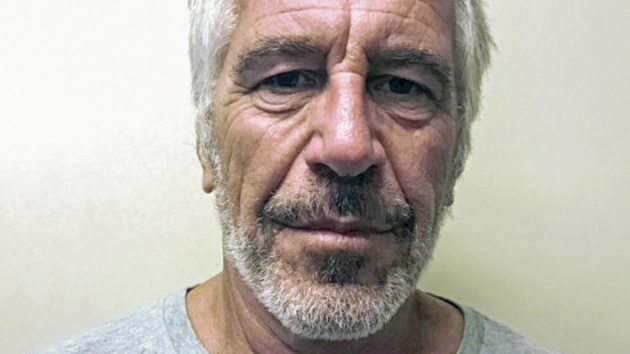Hurricane Milton: Why Tampa Bay is especially vulnerable to storm surge
Written by ABC Audio. All rights reserved. on October 8, 2024
(TAMPA, Fla.) — It has been more than 100 years since Florida’s Tampa Bay area – a region especially vulnerable to storm surge and flooding – faced a direct hit by a hurricane.
But Hurricane Milton is now heading straight for Florida’s Gulf Coast, with landfall and a 15-foot storm surge possible in Tampa by late Wednesday night, meaning residents are racing to evacuate ahead of the storm even as they continue to clean up the damage from Hurricane Helene.
Here’s why Hurricane Milton is posing such a threat to the Tampa Bay region:
Why is Tampa susceptible to flooding and storm surge?
The two major surrounding bodies of water – the Gulf of Mexico and surrounding bays – as well as the low-lying coastline make the Tampa Bay area especially susceptible to storm surge, according to experts.
The continental shelf in the Gulf of Mexico extends far offshore, up to 150 miles in some spots, according to the National Oceanographic and Atmospheric Administration. When water gets “shoved” onto the coast from tropical systems, it has nowhere to go but onto the land, Marshall Shepherd, director of the Atmospheric Sciences Program at the University of Georgia and former president of the American Meteorological Society, told ABC News.
Additionally, when it comes to storm surge, it isn’t the strength of the storm that matters, but rather the size, Shepherd noted. That’s because the larger is the storm system, the longer water gets pushed onto shore, according to Josh Dozor, general manager of medical and security assistance at International SOS, a risk mitigation company, and former deputy assistant administrator of FEMA.
“When you have a large storm, it enables the gradual, continuous buildup of storm surge as it approaches,” Dozor told ABC News. ” … That 10 to 15 feet of storm surge could result in 10 to 15 feet over what is normally dry land.”
It isn’t uncommon for rising waters from Hillsborough Bay, which comprises the northeast arm of Tampa Bay, to spill onto Bayshore Boulevard, a scenic waterfront roadway in South Tampa that serves as recreation for residents, as well as a common route for drivers. Bayshore Boulevard flooded ahead of and during Hurricane Helene, when the storm surge was less than is currently forecast for Hurricane Milton.
Hurricane Helene’s impact is still fresh
The Tampa Bay region is nowhere near done with recovery and cleanup from Hurricane Helene, which made landfall Sept. 30 and brought six feet of storm surge to the Tampa area’s coastlines. The storm’s size allowed for that surge to infiltrate homes and businesses along the Gulf Coast from Cedar Key to Fort Meyers – each of which is about two hours north and south of Tampa, respectively – residents told ABC News.
In Dunedin, Florida, located on the Gulf Coast at the northernmost tip of Tampa Bay, mountains of debris still litter the streets and people were still airing out their belongings when evacuation orders for Hurricane Milton were issued, Dunedin resident Candace Allaire, 39, COO of the Crown & Bull restaurant, told ABC News.
While the restaurant’s newly renovated kitchen weathered the brunt of Helene’s damage, the rest of the neighborhood was destroyed, Allaire said. Many homes for Allaire’s family and employees, as well as neighboring restaurants, had four feet of standing water in them for hours as Helene barreled through, she said.
The emotional toll of Helene less than two weeks ago, and Hurricane Ian two years ago, is still pervasive in the community. Rebecca Kuppler, mother to a 4-year-old son and 2-year-old daughter, lost everything in Hurricane Helene. The family had evacuated to Orlando ahead of the storm and heard from neighbors that the water line was rising higher and higher, she told ABC News.
“It’s not stuff,” Kuppler said of the loss. “It’s our home, it’s the memories, it’s the love, the time you put into that, and that’s what’s been really hard.”
The pile of debris outside of Kuppler’s home was still there as the forecasts for Hurricane Milton began, prompting the family to evacuate yet again.
The back-to-back storms are reminiscent of the 2004 hurricane season, when Hurricanes Charley, Frances, Ivan and Jeanne all struck Florida within a six-week period.
“It’s an extreme amount of stress, and if it happens once in a while, I think people can weather it,” Dozor told ABC News. “But when it happens a couple times a year or a couple times every few years, it takes a great toll on people.”
How climate change is increasing the storm risk in the Tampa Bay region
The extreme threat from hurricanes that the Tampa Bay region faces is also likely being influenced by our changing climate.
Human-amplified climate change is the primary cause for present-day rising sea levels, according to a consensus of climate scientists. It’s also triggering more frequent and more intense extreme rainfall events, experts say.
While many factors contribute to the magnitude and impact of storm surge and coastal flooding, average sea levels for many Gulf Coast communities are more than six inches higher today than they were just a few decades ago, data shows.
Human-amplified climate change also likely affected how fast Hurricane Milton intensified as it tracked over the warmer than average waters of the southern Gulf of Mexico, according to researchers. The record-high sea surface temperatures observed in this region over the past two weeks were made up to 400 to 800 times more likely by climate change, according to a rapid attribution analysis by Climate Central.
Warm ocean waters provide the energy hurricanes need to form and intensify. The warmer the water, the more powerful the storms typically are.
While a link has been established between the unusually warm sea surface temperatures and human-caused climate change, it is not yet known to what degree that climate change may have influenced Hurricane Milton’s development.
How Tampa Bay is preparing for the storm
Mandatory evacuations are in place for six counties in Florida, with Tampa at the center of the threat. Airports, businesses and schools from Tampa to Naples, some 170 miles south, are closing in preparation for Milton.
The Tampa area is one of the top five places for evacuations due to potential storm surge, Dozor said. Tampa Mayor Jane Castor issued a dire warning, urging those in the evacuation zones to heed evacuation mandates.
“If you choose to stay in one of the evacuation areas, you are going to die,” Castor said in an interview with CNN Monday night.
While FEMA and emergency management at the state and local levels report that they are adequately prepared for Hurricane Milton, it is incumbent upon residents to follow instructions and get themselves out of harm’s way in a timely manner, Dozor said. In highly populated cities along the Tampa peninsula, like Tampa, St. Petersburg and Clearwater, it is important for people to leave early because of the limited roadways.
“There are a lot of bottlenecks that hinder quick and efficient movement of populations to be able to leave the peninsula of Tampa,” he said.
It appears that residents are heeding the warnings, Dozor noted. Beginning on Monday, standstill traffic could be seen for miles on I-75 and the Sunshine Skyway, the bridge that spans the Tampa Bay, as residents embarked on a mass exodus to safety.
At 4 a.m. on Tuesday, Candace Allaire and her fiancé evacuated north to Destin, in Florida’s panhandle, to ride out the storm. Fuel was hard to come by in preparation of their road trip, she said.
In addition, hotel availability is most major Florida cities to which residents might evacuate – such as Fort Lauderdale, Gainesville and Jacksonville – is already extremely low, Dozor said.
“All the hotels are reserved for people who’ve obviously been evacuated,” he said.
Copyright © 2024, ABC Audio. All rights reserved.





